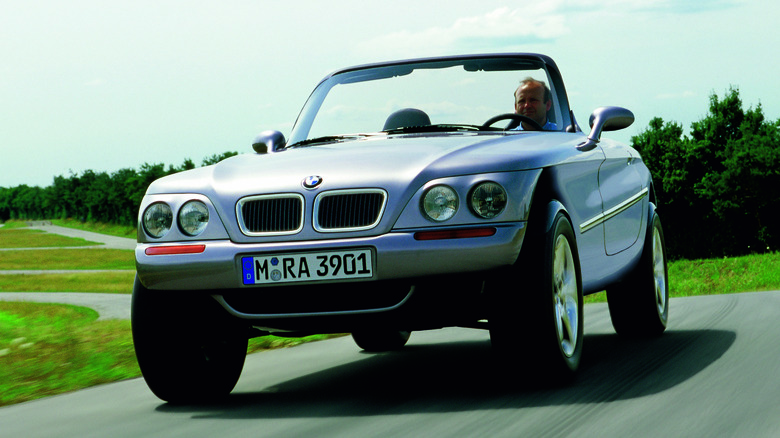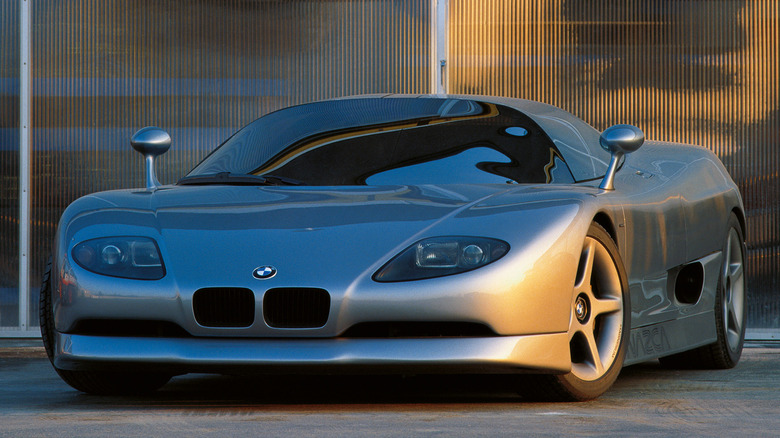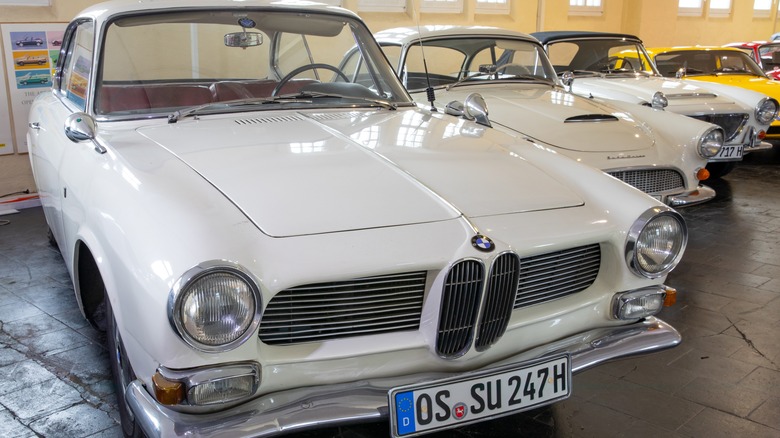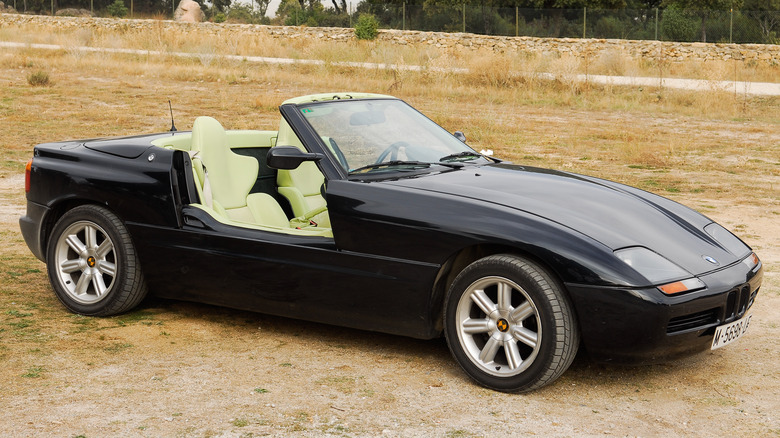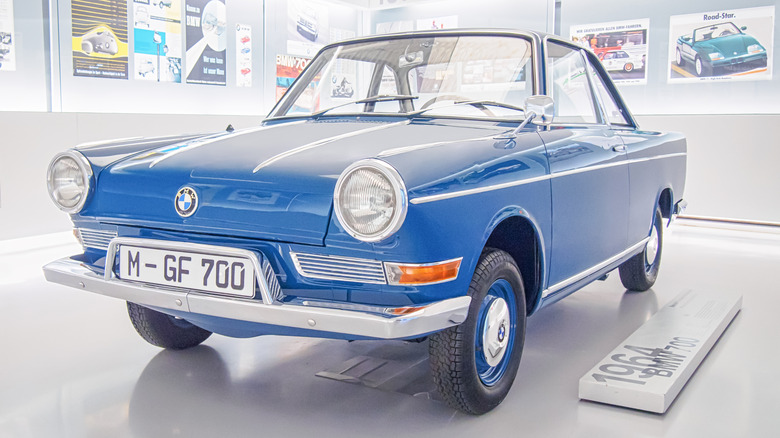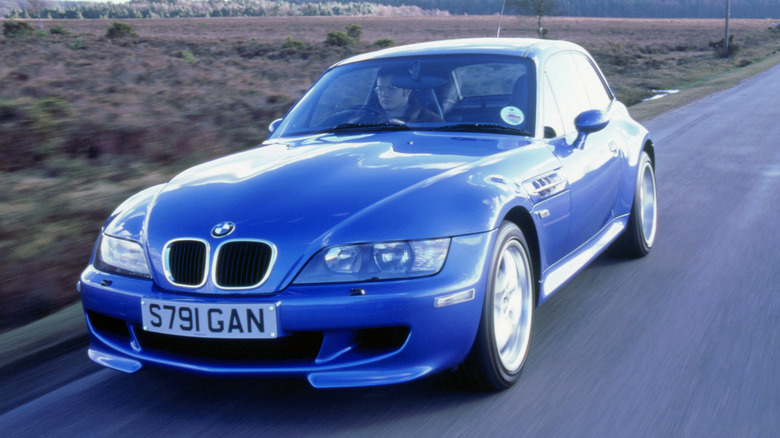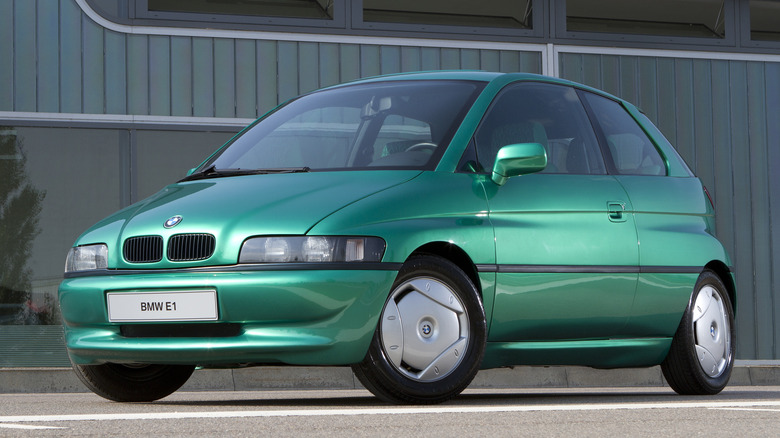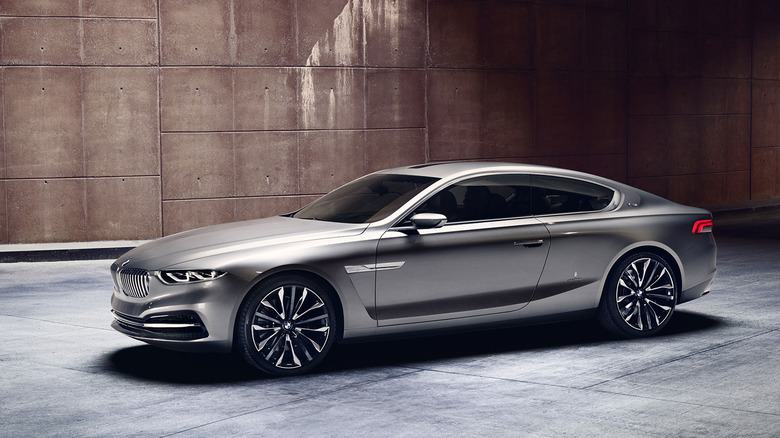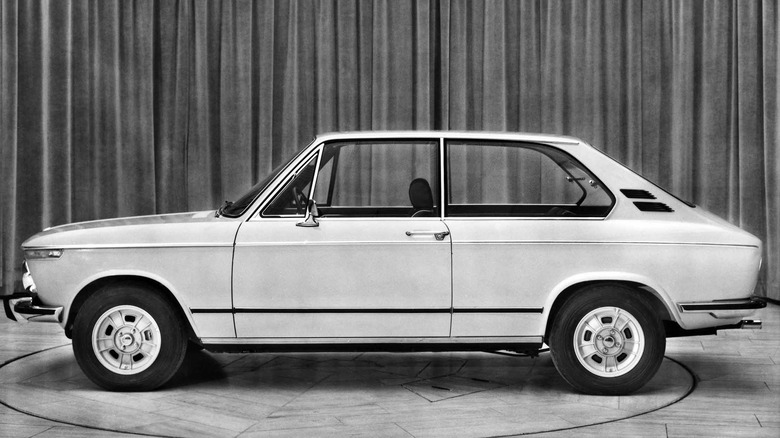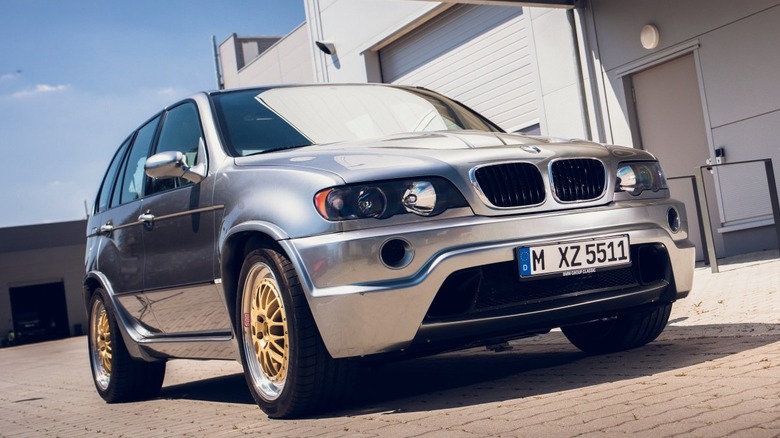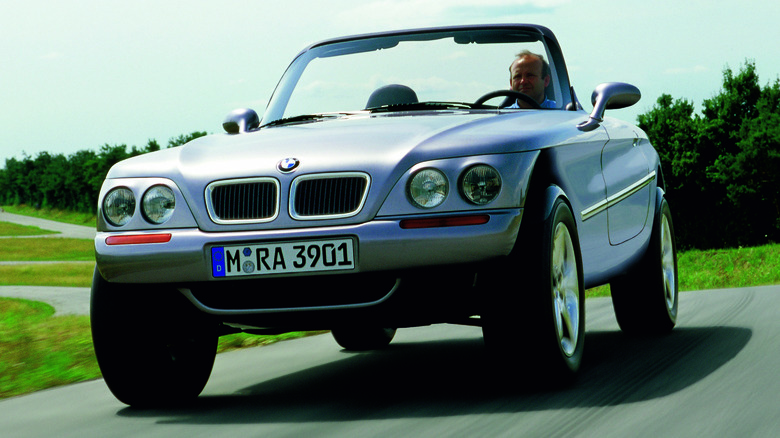10 BMWs That Everyone Forgot Existed
BMW can trace its roots all the way back to 1916, when it was founded as an aircraft engine manufacturer aiding the German war effort. It produced its first automobile in 1929, and in the decades since then, the brand has been responsible for some of the world's most globally-recognized car models. It has grown to be the seventh-largest carmaker in the world by revenue, and its cars are sold in every major market. But, for every BMW that has carved itself into the global automotive consciousness, there are plenty more models from the German brand that have been simply forgotten about.
Often, these forgotten cars are low-volume specials or one-offs, but in a few cases, cars that were commercially very popular back in their day have fallen into obscurity over time. Plus, the company's back catalog also includes plenty of overlooked concepts that never made it to production, but deserve their place in the brand's history all the same. With the Bavarians now focused on transitioning their lineup to EVs, it seems likely that a fresh wave of models is destined to end up consigned to the archives. So, it's a good time to take a look at 10 BMWs that most people will have already forgotten ever existed.
BMW Nazca M12
The only true production supercar that BMW has ever made is the M1, but it has come close to building a successor a number of times. In 1991, the company showed off one of those potential successors at the Geneva Motor Show, called the Nazca M12. The car was the debut creation of Fabrizio Giugiaro, son of the founder of Italdesign, Giorgetto Giugiaro. The car was powered by a 5.0L V12 engine, the same one also featured in the production 750i and 850i at the time. It's thought to have produced around 300 horsepower and was mid-mounted for better weight distribution.
The public reaction to the prototype was very positive, and BMW followed it up with two further prototypes, according to BMW Group Classic. Those prototypes were the Nazca C2 (unveiled in 1992), and the C2 Spider (unveiled in 1993). Despite praise for all three cars, BMW never put the Nazca into series production. It did, however, allow Italdesign to build a second version of the M12 for one particularly influential buyer, the Sultan of Brunei. As with many of the Sultan's cars, the details are hazy, but it's thought that he bought at least one M12 for his personal collection, perhaps several. According to Top Gear, a Sultan-owned M12 was listed for sale in 2011 with a price on request only, but it's not known whether the car was ever sold.
BMW 3200 CS
The 3200 CS was the successor to the popular BMW 503, and it was developed during a period of great change for the company. As BMW Group Classic notes, the styling tropes of the '50s were rapidly being seen as outdated by the time the 3200 CS debuted in 1960, and so an entirely new design was needed for BMW's cars to stay relevant. The 3200 CS did not disappoint, with Bertone-designed coachwork that impressed critics and the public alike. It also remains the only production BMW to have been partially built at Bertone. The bodies were created at the Italian factory and then transported by rail to Munich for final construction.
The car was one of the first to feature the CS initials, which stands for Clubsport and which later developed into a sub-line of lightweight, performance-focused sports cars in its own right. It was also one of the first with the Hofmeister Kink, a design feature that has now become synonymous with BMW's cars. According to Secret Classics, it's thought that just 50 examples of the car remain on the road today, out of an initial production run of roughly 600 units.
BMW Z1
BMW's Z4 roadster is today a staple in their lineup, with the latest generation being developed in conjunction with the fifth-generation Toyota Supra. But, the entire existence of the Z line of cars was down to chance, as the first iteration, the Z1, was only ever intended to be a design study. A very positive public reaction to the Z1 concept convinced BMW to make a limited run of Z1 production cars, to test if there would be a market for a sporty German roadster. Auto Express reports that the car was very different to the brand's other offerings at the time, being both characterful and quirky, a far cry from the serious, technically-minded cars on offer elsewhere in the brand's lineup.
The car was a sales hit, and all 8,000 Z1s were quickly snapped up. Apart from its unusual styling, one of the most famous features of the Z1 is its sliding doors, which slide downwards into the lower sill. It remains a unique feature to this day, with BMW never having produced another system like it since. The car is a fun, offbeat novelty, but its lack of performance prowess compared to other high-end BMWs from the era, like the E30 M3 and E28 M5, has meant that the Z1 has largely slipped into obscurity. However, the car does have a niche fan base, and Auto Express reports that the vast majority of the car's original production run are still on the road today.
BMW 700
Launched in 1959, the BMW 700 succeeded the 600, which had been nicknamed the "Big Isetta" thanks to its visual similarities with the famous microcar. In comparison to the bulbous, pod-like proportions of the 600, the 700 was a much more refined affair, with pared-back styling and a traditional three-box design. From the car's shape, it might look like the engine sits at the front of the car, but it was in fact at the rear. Instead, a spacious "frunk" was built into the front end, which gave it an impressive amount of luggage capacity for its size.
The Sport version of the 700 was the most desirable, with 40 horsepower on tap from its 697cc two-cylinder engine. For its time, it was decently quick, and BMW Group Classic reports that the car won several high-profile national races in Germany, including the Hillclimb Championship in 1960. In total, 182,211 examples of the car were built across five years, but only a few remain on the road today.
BMW Z3 M Coupe
The Z line of cars have been developed from their inception as roadsters, but during the Z3's production run, a limited number of coupes were also sold. The car was developed from the Z3 M Roadster, and it's sometimes simply referred to as the M Coupe. The fact that the Z3 was designed first and foremost as a roadster is the reason for the Coupe's unusual styling, and thanks to its oddly-shaped rear end, it picked up the nickname, the "clown shoe." According to BMWBlog, the car was developed in secret by BMW engineers, and when it was first presented to the company's executives, they were not impressed. However, after driving the car, they agreed to sign off on a limited production run.
The car made up to 325 horsepower from a six-cylinder engine that had been borrowed from the E36 M3 Evolution, and had a top speed of 155 mph. BMWBlog reports that it was regarded as one of the best driver's cars of its era, even if its high asking price and divisive looks limited its appeal. In total, it's thought that only 2,858 M Coupes were ever built, out of a total of 297,088 units of the Z3 overall.
BMW E1
BMW bid farewell to the i3 in the US in 2021 thanks to slow sales, and the car is set to be axed altogether in 2022. The car was famously BMW's first production EV and one of their only city cars in living memory. However, it wasn't their first EV, as that title belongs to the prototype E1, which was essentially an i3 prototype built two decades before the production vehicle went on sale. The car debuted in 1992 and had a claimed 155 miles of range, which is almost identical to the modern i3's range. However, it only had 45 horsepower, meaning 0-50 mph took 18.0 seconds, according to Autocar.
For its era, it was remarkably forward-thinking in its construction as well as its powertrain, with a lightweight aluminum chassis and plastic body panels. The interior was also very minimalist, with buttons and switches removed wherever possible, a design philosophy that's now been made famous by EV giant Tesla. Autocar reports that the car was developed in response to a Californian government mandate that at least 2% of cars sold in the state had to be zero-emissions by 1998. But, as that initiative was scrapped, BMW saw no reason to continue developing the E1, and so it was shelved until the renewed interest in electric cars in the late '00s led to the development of the production i3.
BMW Pininfarina Gran Lusso Coupe
Since buying Rolls-Royce from VW in 1998, BMW has not developed any ultra-high-end luxury cars under its main brand. However, it gave fans a glimpse of what a Bentley-rivaling BMW might look like in 2013, with the Pininfarina Gran Lusso Coupe. The car was only built as a one-off, designed to impress the guests at the Villa D'Este Concours event on the shores of Lake Como, Italy. It's a V12-powered, luxurious grand tourer, and as its name suggests, the design of the car was handled by the famed Italian design house, Pininfarina.
Apart from being one of the most visually striking BMWs of recent years, the car also made use of a number of exclusive materials to set it apart from other concept vehicles. The interior wood inserts, for example, were made from fossilized material that had been extracted from an ancient New Zealand swamp. The wood was certified as being 48,000 years old through carbon dating. The leather in the car was hand-selected by craftsmen at a single Italian factory, and according to BMW's press release, it was key to giving the car "a warm, exclusive ambiance." Despite receiving a positive reception at the Concours event, BMW never considered putting the car into production, most likely because it might have cannibalized sales from Rolls-Royce.
BMW 2002 Touring
The BMW 2002 Turbo is widely regarded as one of the best BMWs ever made, its success in racing helping to immortalize it as one of the most desirable sporty sedans of its era. But, the 2002 model was also available in two other variants, one being the Baur-engineered convertible and the other being the obscure 2002 Touring. Introduced in 1971, the Touring was developed as a way to broaden the appeal of the 2002 model, which had been on the road for five years already by that point. According to BMW Group Classic, the front half of the car is identical to a 2002 sedan, and it's only behind the B-pillars that the engineering (and of course the styling) differs.
The car sits somewhere between a wagon and a hatchback, offering more space in the rear than the sedan variant but without compromising on handling. The engine options were, according to BMW Group Classic, identical to the sedan, and a "rally pack" could be optioned, which added sports seats, wider tires, and alloy wheels. The niche appeal of the Touring combined with its more expensive price tag meant that it never saw as much commercial success as the 2002 sedan did, with only 30,000 units being made. Few remain on the roads today, and those that do are generally worth less than the equivalent sedan or convertible variants are.
BMW X5 LM
The super-SUV is now very much a fully-fledged segment of the car market, with cars like the Lamborghini Urus and Bentley Bentayga both being best-sellers for their respective brands. But, back in 2001, BMW was experimenting with a super-SUV of their own, way before most companies had even considered such a thing. The X5 LM was powered by the V12 engine that was used in the McLaren F1, which according to BMW made "over 700 horsepower." The car was developed as an engineering test bed to see just how fast an SUV could be, and it helped pave the way for the X5 M, the first M-badged production SUV.
It's worth noting that a 2022 BMW X5 M makes 600 horsepower, still over 100 horsepower short of what this skunkworks creation was producing over twenty years ago. The car used an all-wheel-drive system to put power to the asphalt, and a six-speed manual transmission was fitted. According to BMW M Magazine, the car held the Nürburgring Nordschleife SUV lap record for 19 years, from 2001 to 2020, setting a lap record of seven minutes and 49 seconds.
BMW Z18
BMW has made its fair share of unusual cars over the years, but arguably one of its strangest is the Z18 concept. The car is essentially a Z roadster in full off-road guise, designed for buyers who wanted an all-terrain car that doubled as a convertible. It's more bare-bones than most other BMWs from the era, and part of the reason for that is because the company made sure to waterproof every aspect of it, claiming it could drive through flat stretches of water without issue. The car was the brainchild of the company's Technik division, a small team of designers who were separated from the main company to work on innovative projects like this one.
The Z18 is actually the first 4x4 BMW ever made, predating the X5 by about four years, according to Top Gear. The concept's V8 engine was used in the production X5, so although it might not look like it at first glance, some of the underlying components used in the Z18 did actually make production. Unfortunately, the overall design of the car was deemed unsuitable for a production run. The idea of a convertible SUV has been developed by the likes of Nissan and Land Rover for their Murano CrossCabriolet and Evoque Convertible respectively, but never with much commercial success. So, it seems like BMW made the right call by leaving the Z18 as a concept only, consigned to the archives and now forgotten about by most BMW fans.
